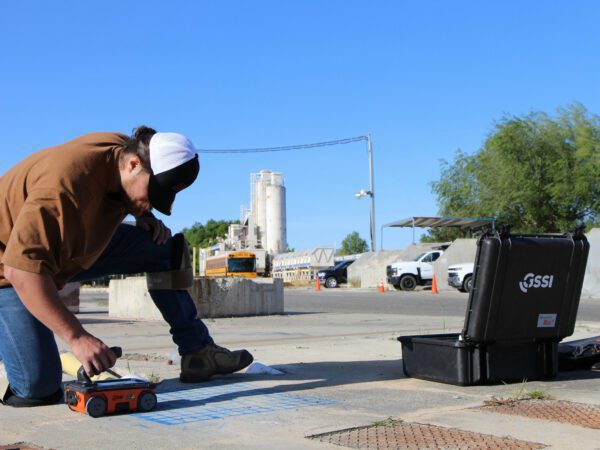Nationwide RainierGPR Service Areas for Advanced Concrete Scanning
Nationwide RainierGPR Service Areas for Advanced Concrete Scanning
Blog Article
Enhancing Job Planning and Execution Through Advanced Concrete Scanning Techniques
In the world of project preparation and foresight, implementation and precision are important components that can make the distinction between success and troubles. Advanced concrete scanning methods have arised as an advanced tool established to elevate the standards of task management within the construction market.
Benefits of Advanced Concrete Scanning Techniques

Improved Accuracy in Job Evaluations
Enhancing job evaluations via advanced concrete scanning strategies dramatically improves the precision and reliability of construction examinations. By utilizing cutting-edge scanning innovations such as ground-penetrating radar (GPR) and 3D imaging, job groups can now acquire detailed understandings into the problem of concrete frameworks, determining potential flaws or weaknesses that may not show up to the naked eye. This boosted degree of precision in task assessments makes it possible for construction specialists to make more informed decisions regarding repair and maintenance methods, causing improved overall task outcomes.
Furthermore, the increased precision in project analyses accomplished via innovative concrete scanning methods assists in minimizing the danger of unforeseen problems during the building phase. By proactively finding hidden abnormalities within concrete structures, such as rebar rust or spaces, task groups can deal with these problems early, preventing pricey hold-ups and remodel later in the project lifecycle. Ultimately, the boosted precision in task evaluations helped with by advanced concrete scanning techniques adds to higher performance, cost-effectiveness, and top quality in building projects.
Early Recognition of Architectural Difficulties
Very early discovery of structural obstacles plays an essential role in making sure the stability and safety and security of concrete frameworks throughout the building procedure. Determining prospective issues at a beginning permits timely treatment, protecting against pricey rework, routine delays, and security dangers. Advanced concrete scanning techniques, such as ground-penetrating radar (GPR) and 3D imaging, make it possible for job teams to reveal surprise problems, gaps, reinforcement design disparities, and other abnormalities that can jeopardize the framework's security.
By applying these strategies during the preparation and implementation phases, building and construction professionals can proactively resolve architectural challenges prior to they intensify right into major issues. As an example, identifying insufficient concrete cover over support bars beforehand can avoid deterioration and architectural weakening in the lengthy run - RainierGPR Service Areas. In addition, identifying variations in concrete thickness or density can aid optimize product use and make certain uniform stamina buildings throughout the structure

Inevitably, very early recognition of architectural obstacles with innovative concrete scanning not only boosts the general high quality and toughness of the building and construction yet also adds to a more secure developed atmosphere for users and residents.
Enhanced Safety Measures in Building
The execution of durable safety and security methods is necessary in the construction industry to mitigate risks and secure the wellness of employees and stakeholders. To improve security procedures, construction business are increasingly embracing technical innovations such as wearable gadgets that keep track of employees' crucial indicators and detect prospective health and wellness issues in real-time. By focusing on security through the unification of advanced modern technologies and thorough training programs, building and construction jobs can considerably lower crashes and create a safe functioning environment for all included.
Streamlining Job Administration Processes
To maximize operational efficiency and make certain project success in the construction sector, a focus on improving project management procedures is crucial. By applying efficient project management processes, building and construction jobs can lessen delays, reduce prices, and enhance overall efficiency. One vital element of streamlining job administration is the use of innovative modern technologies such as Building Information Modeling (BIM) software, which enables website link real-time cooperation, clash detection, and accurate project scheduling. Furthermore, the fostering of cloud-based task monitoring systems permits seamless interaction amongst group members, immediate accessibility to project data, and the capacity to track development in real-time.

Conclusion
To conclude, the use of sophisticated concrete scanning techniques provides many benefits for task planning and implementation. These methods offer enhanced accuracy in task analyses, early identification of structural challenges, boosted safety actions in construction, and streamlined task administration processes. Incorporating these techniques right into project process can ultimately result in much more effective and efficient end results in building jobs.
Eventually, the boosted precision in project evaluations promoted by advanced concrete scanning techniques adds to greater performance, cost-effectiveness, and top quality in construction jobs. RainierGPR Service Areas.
To optimize operational efficiency and make sure task success in the construction sector, an emphasis on enhancing project administration processes is necessary. By applying effective job administration processes, building and construction tasks can minimize hold-ups, reduce costs, and improve overall productivity. By enhancing project administration processes with innovation combination, clear interaction, and data-driven approaches, construction tasks can achieve higher performance, cost-effectiveness, and effective results.
These techniques give improved precision in task Visit This Link evaluations, early recognition of architectural obstacles, improved safety procedures in building, and streamlined project monitoring processes.
Report this page